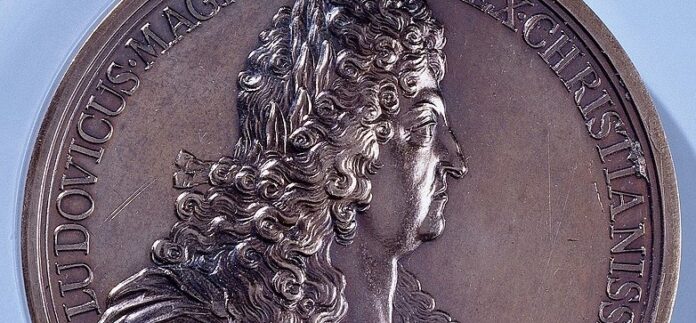“Honey, I found a treasure!” If you hear your partner exclaim this, you might think they were pulling your leg. Philo van Gasselt did, when her husband returned home with this message. “He tends to be the joker in the house, she says. But this time it was no joke: while working on the renovation of his farm, dating from 1584, he discovered a hoard of 317 silver coins. The oldest coin probably dates from 1680.
A year ago Philo van Gasselt and Willem van den Hurk bought an old farmhouse in Eindhoven that had been uninhabited for a long time. “We needed to insulate all the walls and the floor”, says Philo. The tiles, which had been laid directly on the sand floor, needed to go too.
When Willem started digging, a loud crack said his spade had hit something. It turned out he’s broken an old earthenware crock. He dug it up and found the old coins.
Hooked nose
Meanwhile, Philo was at home, unsuspectingly sipping on her wine, she says. “When he entered the garden he shouted: ‘Honey, I’ve found a treasure!” It was only when he laid one coin after another on the garden table before her, that she realised he was not joking. “We counted a total of 317 coins. I could not believe my eyes”.
Most coins had a greenish patina. Silver coins usually contain a bit of copper for strength. It’s the copper that oxydises with age, lending this greenish blue colour to the coins.” Some coins are so worn down that only a greenish sliver remains”, Philo says.
Then there are also coins which are still partly silver with a visible text image and inscription. “There’s one coin with the text ‘Lodewijk XIV, and a picture of his head. You can see he had a huge hooked nose”, Philo says laughingly.
Speculation
Philo were curious and scoured the internet for more information about the coins. “We saw that some were worth 800 euros and we were beginning to think of ourselves as millionaires”, Philo says. “But alas, the coins were far too damaged to still have that value”.
They also speculated how the coins might have ended up under their farmhouse. “When the euro was introduced, people hid money, hoping it would have great value later”, Philo guesses. These people might have done something similar”.
Philo and Willem also read on the internet that the Java war was fought at that time. Perhaps the person who lived in the farmhouse had been called up to fight and wanted to keep the coins hidden until he came back, but he never came back”.
Treasure remains in Eindhoven
Eventually they decided to approach the Eindhoven municipality to tell them about thier discovery. “Old coins were found twice before, but those were bought by collectors”, Philo says. So the municipality was very happy with the opportunity to buy the coins.
And so the hoard was bought by the municipality. In a first reaction they emphasise the cultural and historical interest for Eindhoven. “The coins offer insight into our past”, says alderperson for heritage Maes van Lanschot. “We will exhibit the coins, so that everyone can enjoy this heritage”.
Source”Studio040
translator: Greta
















